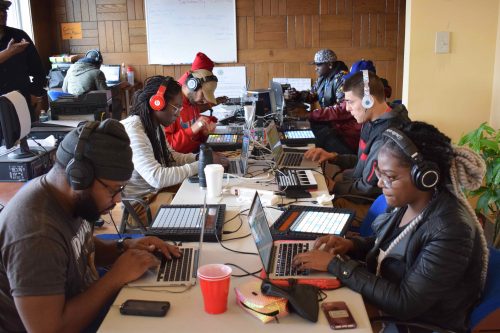
Over the past few years, there has been an upward trend in DukeEngage applications for U.S.-based programs, due in part to the efforts of DukeEngage to meet one of the goals set forth in its 2017 Strategic plan.
Expanding civic engagement opportunities in the United States was a major goal that DukeEngage was committed to reaching, wanting to provide Duke students with meaningful and varied opportunities to serve more communities in the United States. In recent years, group programs in Kauai, Chicago and Puerto Rico have been added, giving students opportunities to work with sustainability, urban education and energy organizations.
Through U.S.-based group programs and independent projects, DukeEngage participants have served urban communities in Seattle, Los Angeles, St. Louis, Boston, Miami, Washington, D.C., Charlotte, New York City, New Orleans and more. Students have been placed in rural communities, as well — among them, projects located in eastern North Carolina, New Mexico and South Carolina.
Of the projected 398 openings for 2019 group programs, DukeEngage allocated approximately 40% to U.S. locations and 60% to locations abroad. That means this year, for the first time, DukeEngage has surpassed its strategic goal of sending 35% of participants to U.S. locations.
Just under 450 students applied to U.S. group programs for the summer of 2019. When all openings are ultimately filled, 36% of applicants to U.S. programs will have been placed. Just under 490 students applied to one of DukeEngage’s international group programs. Placements have been finalized, and 48% of those applicants have been admitted to DukeEngage this summer. In comparison to international programs, the competition among applicants to gain acceptance to U.S.-based programs was significantly greater in 2019.

A few interesting numbers to note:
- In comparison to 2017, the 2019 Round 2 (U.S. group) submitted applications rose 37%.
- In comparison to 2018, the 2019 Round 2 (U.S. group) increase was 10%.
Overall, the totals show a healthy upward trend in U.S. program submissions over the past three-year period, an uptick that aligns with the strategic goal of 35 percent placement in U.S. cities.

We wanted to know why students were applying to U.S. programs in greater numbers, so we asked a few.
Jasmine Syed participated in DukeEngage-Orange County:
“I chose a U.S. program because I was excited about the mission of the DukeEngage-Orange County program in particular. Additionally, I realized all the need we have for civic engagement domestically, and I liked the idea of mentoring female students in U.S. because of how much I could relate to them. It was amazing to make personal connections with the girls, and I remember how satisfying it was to watch them realize their own potential and interest in STEM. I went into the program thinking about the civic engagement portion, and throughout my DukeEngage experience realized that the opportunity offered me so much personal growth and self-realization as well.”
Eritrea Temesghen participated in DukeEngage-Miami:
“I didn’t really know anything about DukeEngage until my first semester on campus. My first exposures to the program were often concerning the white savior complex and attitude of voluntourism that many felt were attached to DukeEngage, especially the international programs. I think the relationship between students and college-sponsored international programs is complicated, and the understanding that the experience is mainly for and about the students themselves is often lost. For that reason, I didn’t plan to apply for DukeEngage. However, later on I learned about the domestic programs that were being offered, and the DukeEngage-Miami program caught my eye. While the ethical challenges of short-term “service” in communities that are not your own are just as relevant and important to engage with in domestic programs, I did feel more comfortable with the idea of staying within the U.S. Additionally, as a child of immigrants, the topic of immigration is very personal to me. With that in mind, I decided to apply for the Miami program. I recommend both U.S. programs in general and my program, DukeEngage-Miami, because it provides an amazing opportunity to experience a community that is often not showcased in mainstream U.S. culture. The diversity in Latin American and Caribbean communities in Miami is absolutely beautiful, and you learn a lot of important history about how different communities immigrated and the challenges they currently face in the city. I think students have just as much to take away from U.S. programs as international programs, and you have the opportunity to learn that the U.S. itself is incredibly diverse. Every community, whether domestic or international, has its own story.”
